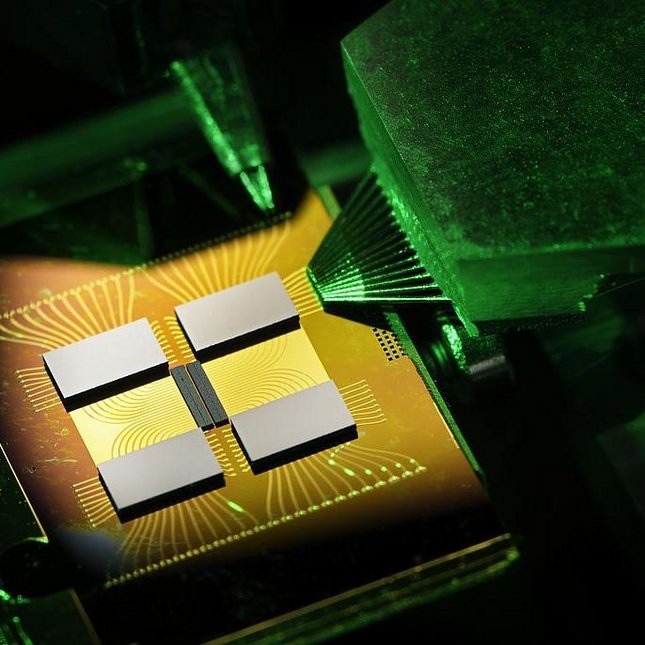Ton Backx, CEO Institute for Photonic Integration TU/e (January 2018)
This is a next-generation basic technology on which we will be able to build many more things
A chip that works with light – photons – instead of the standard electrons as information carrier. These photonic chips the size of a grain of rice are built into increasing numbers of devices and are going to bring about a new revolution, if we are to believe Ton Backx, CEO of the Institute for Photonic Integration.
For the handling of data traffic in 2016 over five percent of the total electric power was consumed worldwide. And this use is growing at an exponential rate. We want to exchange ever more information with our mobile phones and many devices are also connected with the Internet more and more often. Not to mention the data flow required for the intercommunication between the devices. The electronic superhighway is getting congested and in order to prevent that, we will need to switch to new technologies. And we do not have to look far, says professor Ton Backx with enthusiasm. He is the director of the Institute for Photonic Integration (IPI) that was set up in 2016 and that pools knowledge in the field of integrated photonics.
"The government sees the importance, but it should do more than just pay lip-service"
There are two problems we are coming up against in today’s data traffic. On the one hand, the microelectronics being used today has reached its limits if you consider the efficiency of data processing. On the other hand, the energy consumption needs to be cut back drastically if we want to continue in this way. That is why we are working hard here to put the integrated photonic chip on the market.
Communication by means of light harbors a number of major advantages. Photons are massless so that they can move relatively quickly. And they have no charge, so that there is no energy loss occurring to the environment. By means of photons many processes can become far more energy-efficient. Moreover, optical components fit onto a much smaller chip, which makes them simpler to integrate and which makes the optical systems far less sensitive to environmental influences. At the highest transport levels most of the communication is already taking place via light traveling through optical fiber cables. Now we are going to extend that to all the other layers.’

That Eindhoven has taken the lead in the field of integrated photonics is the result of a long history in which – hardly amazing – Philips plays an important part. As early as in the mid-1960s Philips developed optical fiber technology for telecommunications and later it used the light-based technology also for the storage of data on CD, DVD and Blue Ray. Although Philips had always played a leading role, TU/e was involved in this at an early stage. This ultimately resulted in a strong knowledge position, which gave rise to various startups and research institutes IPI and Photon Delta. Backx explains that an ecosystem like Photon Delta, in which companies can participate also, is essential. ‘We are at a critical moment today. The infrastructure needs to expand at a rapid pace so that we can take the next step required to convert developments into scalable market models. Whilst the government is aware of the importance of photonics, it should do more than just pay lip-service. Sizeable investments are needed for both applied and fundamental research.’
According to Backx there is a great deal of knowledge and plenty of application-oriented developments ready to be brought into the market before long. ‘Initially the transition to optical chips is occurring in the areas of data and telecommunications. Even today, transceivers are being used that are largely based on optical technology. And the new mobile 5G network will be made possible by integrated photonics as well. This technology is bound to change the world and will help solve many of today’s societal challenges. Precision robots operating from a distance, medical sensors, extremely accurate optical ultrasound variants which will enable us to distinguish the minutest details in 3D tissue structures, to watch even the metabolism within cells. Self-driving vehicles, smart city developments, the sensor technology required to keep large cities viable, by controlling the quality of water and air. All of this is being developed today, on a photonics foundation. This is a next-generation basic technology on which we will be able to build many more things. How magnificent can it be that we in Eindhoven can lead this effort.’